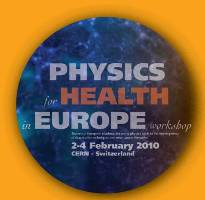Speaker
Mr
Alberto Degiovanni
(TERA Foundation)
Description
A cyclotron-linac complex for carbon ion therapy
A. Degiovanni, U. Amaldi, R. Bonomi, M. Garlasché, A. Garonna, P. Pearce,
S. Verdù Andres and R. Wegner
TERA Foundation, Via Puccini 11, Novara, Italy
The machines used today for carbon therapy are 20-25 m diameter synchrotrons. For the ARCHADE project IBA is building a 400 MeV/u superconducting cyclotron weighting 700 tons and needing a 15 metres long Energy Selection System.
In the years 1993-1995 TERA designed a proton linac (LIBO = LInac BOoster) which runs at 3 GHz. A module was built with CERN and INFN and accelerated protons with the expected gradient: 16 MV/m. A 27 MV/m gradient was also obtained, which entails a peak surface field of 2.5 Kilpatrick.
TERA is now working on CABOTO (Carbon BOoster for Therapy in Oncology) which is placed downstream of a superconducting cyclotron. After a 3 GHz design, to reduce the overall length the frequency has been increased to 5.7 GHz. This paper describes such a fast-cycling cyclotron-linac complex which runs at 300 Hz for the multipainting of moving tumours.
In 23 metres the linac accelerates from 120 MeV/u to 400 MeV/u either C+6 ions or H2+ molecules. The 300 Hz source is the Electron Beam Ion Source EBIS-SC by DReEBIT (Dresden) which produces in 3 μs more that 108 C+6 ions. The K = 480 cyclotron weighs about 170 tons and the Cell Coupled Linac is made of eighteen 1.3 m long units (gradient = 40 MV/m, Kilpatrick = 2.9) powered by solid state modulators equipped with 12 MW klystrons.
By switching off the klystrons, the cyclotron-linac complex produces - in eighteen 15-16 MeV steps - beams of either C+6 ions or H2+ molecules with energies in the range 120 - 400 MeV/u. Smaller steps are obtained with a segmented 20 mm absorber and no Energy Selection System.
Institution
TERA Foundation
Last Name
Amaldi
First Name(s)
Ugo
E-mail address
ugo.amaldi@cern.ch
Please submit a short bio (max 1500 characters)
Staff at CERN in the years 1973-1999.
Physics Professor in Milano Universities in the years 1992-2001.
Spokesman of the DELPHI collaboration: 1980-1993.
President of the TERA Foundation: 1992-now.
Telephone
004122 767 7565
Address
Via Puccini 11, Novara, Italy
Authors
Mr
Alberto Degiovanni
(TERA Foundation)
Prof.
Ugo Amaldi
(TERA Foundation)
Co-author
Mr
Adriano Garonna
(TERA Foundation)
